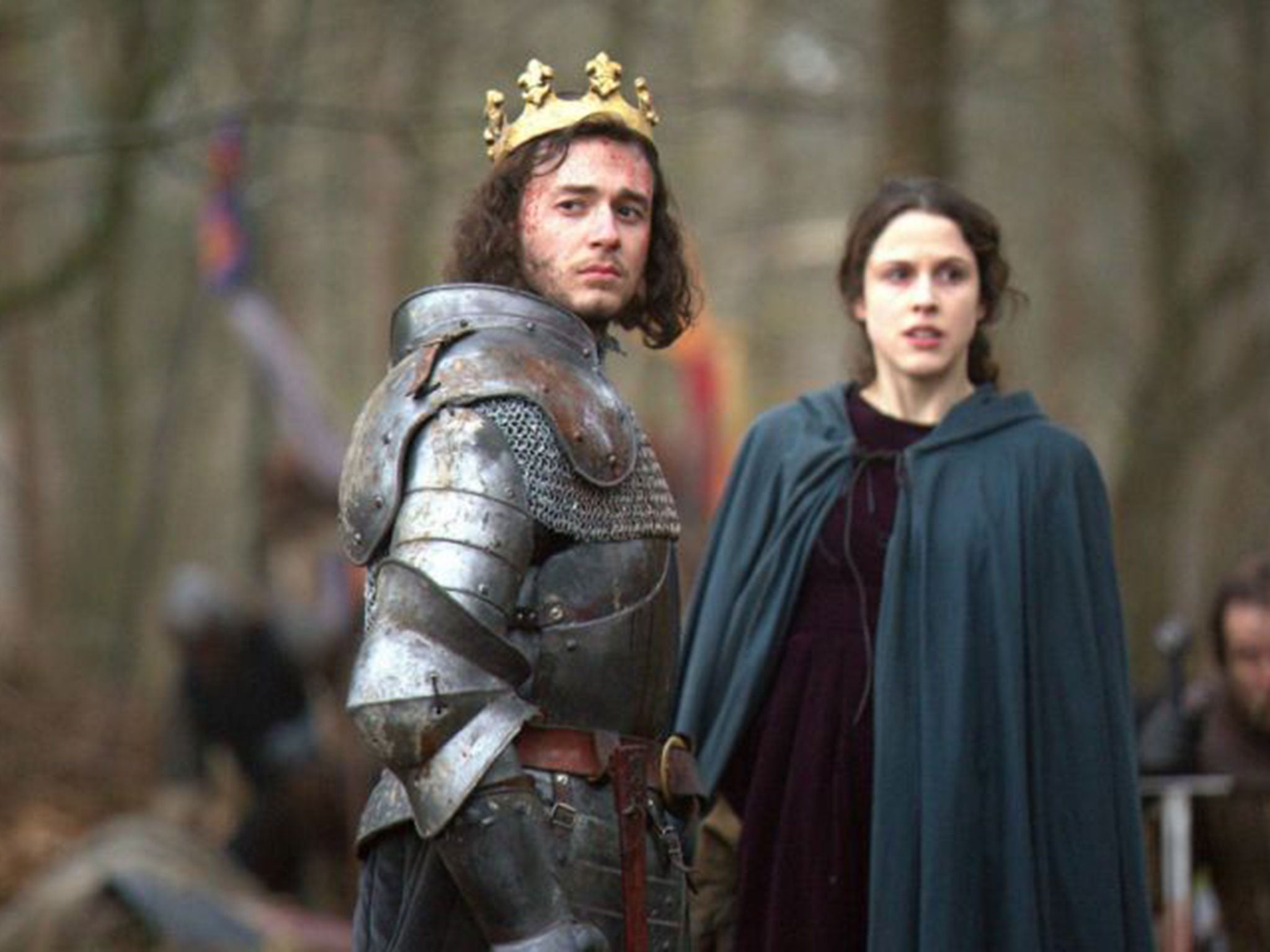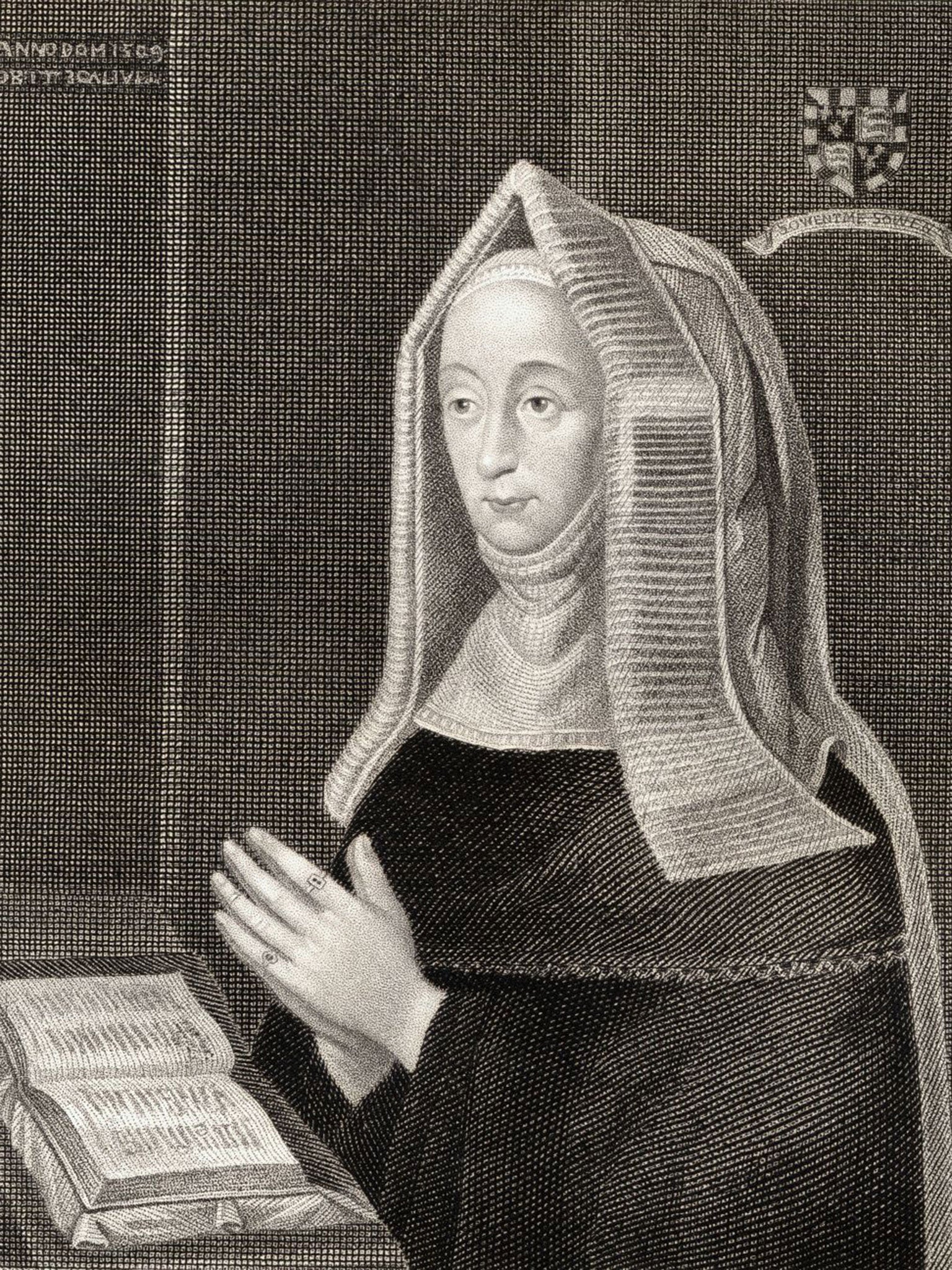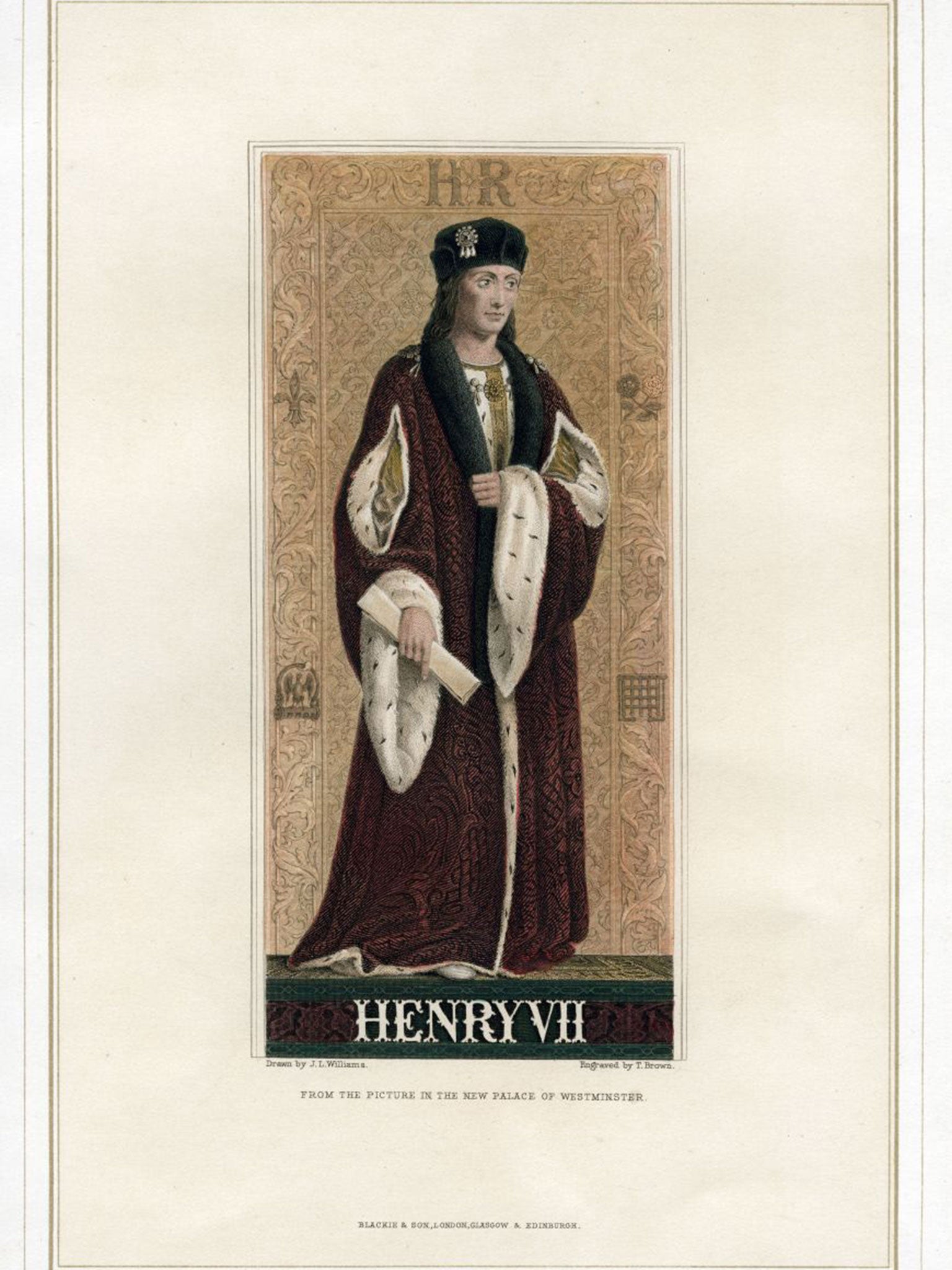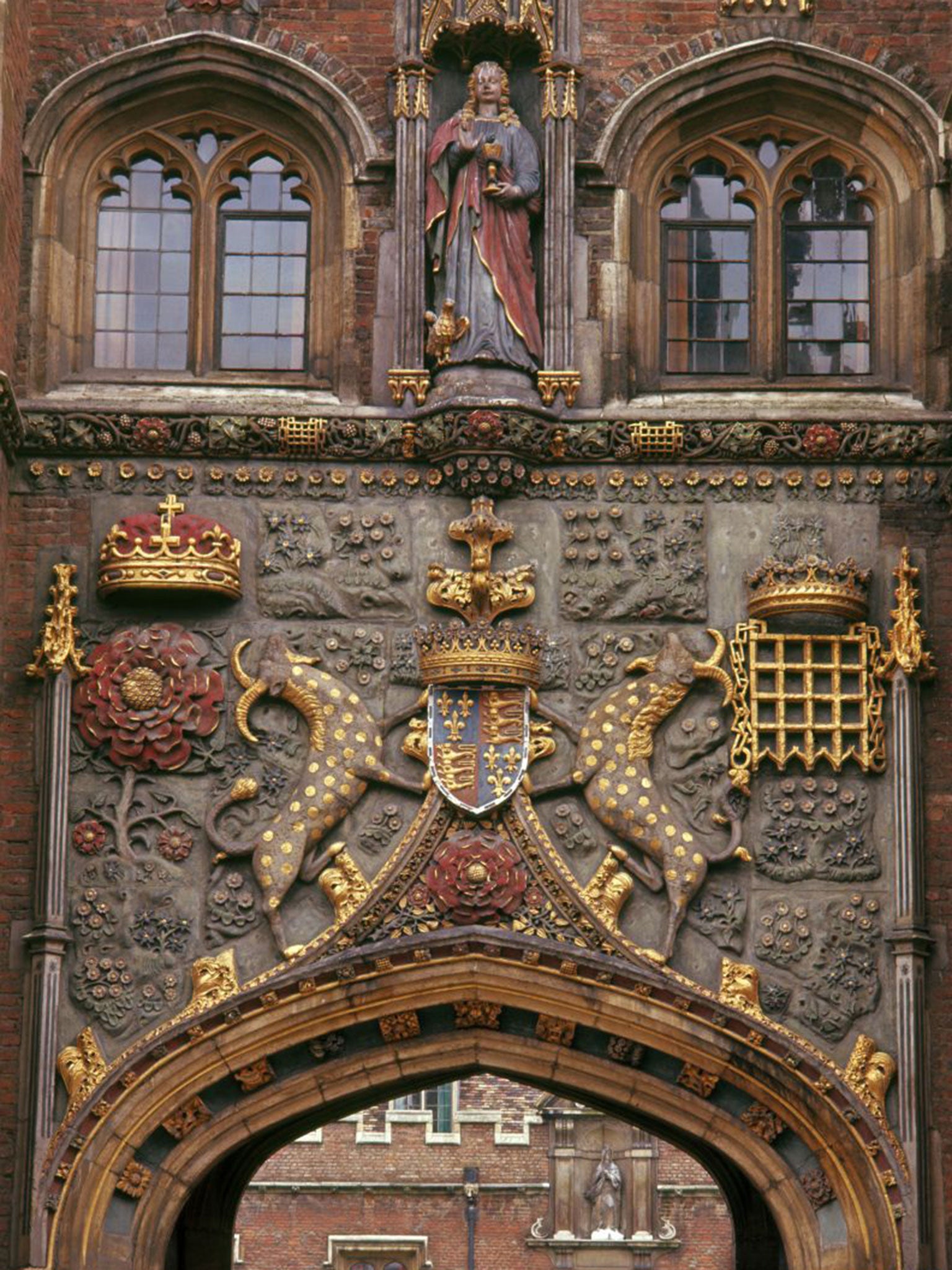Real-life Game of Thrones: Henry VII's mother Margaret Beaufort had to become shrewd and calculating to survive her troubled era
The story of Henry VII's mother might not be well known, but without her, the Tudors would never have come to power, says Livi Michael

There are 14 angels in the ceiling of Manchester Cathedral, each of them playing a different medieval instrument. They are said to have been donated by Margaret Beaufort, mother of Henry VII.
Seven years ago, I didn't know this. In fact, I had never heard of Margaret Beaufort. But my curiosity was piqued. I began to research this mysterious figure. The more I read about her, the more amazed I was that I'd never heard of her.
Our TV screens seem to be dominated by the protracted wrangling for power that forged the Tudor dynasty, from Game of Thrones (inspired by the War of the Roses) to the BBC's adaptation of Philippa Gregory's The White Queen, in which a devout and ambitious Margaret Beaufort appeared. But I believe it's time for the spotlight to be shone on the woman who could well be regarded as the mother of the Tudors.
Her personal life was more fascinating than any TV drama. She was married three times before the age of 15, had her only son at 13, who not only survived but became King of England on a complete outsider's chance. When he was king, he is said to have consulted her on all matters, so that she was described by the Spanish ambassador as the person of greatest influence in the kingdom. After her son's death she was briefly regent, until the coronation of her grandson, Henry VIII.
Margaret Beaufort (1443-1509) went from a position of powerlessness to one of almost total power. The details only make sense when considered in the context of the time. Beaufort lived through a period of intense historical upheaval. In the course of her life the concept of the world changed – one example being the discovery of America, questions were asked that changed the concept of the universe, and this country went from medieval feudalism to a recognisably modern England. Her grandson was the sixth king to occupy the throne during the course of her (relatively) long life of 65 years. And she lived through the 30-year period of bloody civil war now known as the War of the Roses.
Her story is inextricably linked to the story of England.
The Beauforts were the illegitimate offspring of John of Gaunt, third surviving son of Edward III. Although later legitimised, they were prevented from making any claim to the throne by Henry IV – John of Gaunt's legitimate son and heir.
Margaret Beaufort's father ended his own life around the time of her first birthday, after a disastrous campaign in France, and the infant Margaret became the ward of William de la Pole, later Duke of Suffolk, and his wife Alice Chaucer, granddaughter of the poet Geoffrey Chaucer. Before his death, William de la Pole managed to arrange the marriage of his young ward to his son, John de la Pole. This was the first of Margaret's four marriages. She was six and the groom seven years old. Sometime after the duke's death, as the situation in England deteriorated into civil war, the king found it expedient to dissolve this marriage. He granted custody of Margaret to his two half-brothers, Edmund and Jasper Tudor. In 1455, when she was 12 years old, she was married to Edmund.
Margaret went to live with Edmund in Wales, where he was engaged in managing the king's affairs. By the summer of 1456, he was "greatly at war" with the Welsh leader Gruffydd ap Nicolas, who had taken control of a number of royal castles. Edmund regained control of Carmarthen Castle but was then attacked by the Duke of York's men, under William Herbert. William Herbert imprisoned Edmund in Carmarthen Castle, and there he died, in November 1456, not in battle, but of the plague.
By this time Margaret was pregnant.
It was not unusual for members of the aristocracy to marry young. It was slightly more unusual, because of the risk to both mother and child, for them to get pregnant before the age of 14. Margaret Beaufort gave birth to Henry Tudor on 28 January 1457, when she was 13 years and eight months old. There is no suggestion that he was premature; it is therefore likely that he was conceived before she was 13. Her husband died when she was six months pregnant, and he was 26 or 27 years old. For some reason, the marriage was consummated early.
If they hadn't, the whole of English history would have been so different.

In a sermon given after Margaret's death, Bishop Fisher commented on her tiny stature, implying that it had been a difficult birth, in which both mother and son had nearly died. Certainly she never conceived again, despite future marriages, and it is possible that she was damaged during the course of the labour. Infant mortality was so high that Henry's survival seems to be another exceptional factor in the circumstances surrounding his birth. The Duchess of York, for instance, was outlived by only two of her 13 children.
But in this case both mother and son survived. By the time her baby was a few weeks old, Edmund's brother, Jasper Tudor, was already arranging Margaret's third marriage; to Henry Stafford, son of the Duke of Buckingham. They were married on 3 January 1458, when Margaret was 14 years and seven months old.
From this time on the emotional core of the story seemed to me to be the relationship between Margaret and her son, which is one of separation and loss. She was to see very little of him for the next 28 years. Aristocratic mothers were not necessarily close to their children, but there is clear evidence of Margaret's devotion to Henry. She never stopped campaigning to get him back.
Custody of Henry seems initially to have been awarded to Jasper. It is not known how often Margaret saw him in his infancy. But the first phase of civil war culminated in the Battle of Towton, 1461, which resulted in defeat for the House of Lancaster and victory for the House of York. Both Jasper Tudor and Henry Stafford had fought for the losing side. Jasper fled, Henry made his peace with the new king, Edward IV. However, King Edward granted custody of Henry Tudor to William Herbert.
From the age of four, Henry was brought up in the household of the man responsible for the death of his father. He seems to have been well treated there, but although his mother remained in contact with him, there is only one recorded meeting. After the execution of William Herbert in 1469, Henry was reclaimed by his uncle, Jasper Tudor. But after the fateful Battle of Tewkesbury both uncle and nephew were forced to flee to Brittany, where they remained for the next 14 years.
Margaret maintained contact with her son throughout his years of exile. More than once she put herself at risk on his behalf. Most dramatically, she orchestrated the series of rebellions against Richard III in order to aid her son's first attempt to return to England in 1483. She narrowly escaped being attainted for treason, but was placed in the custody of her fourth husband, Thomas Stanley, and forfeited all her titles and estates to him.
There is much speculation about the part she played in the deaths of Edward IV's sons, the "princes in the Tower". It is known that soon after their presumed deaths she was negotiating with their mother for the marriage between her son and Princess Elizabeth, Edward IV's oldest daughter. At Rennes Cathedral on Christmas Day 1483, Henry Tudor pledged to marry Elizabeth of York, who was now heir to the throne.
By this time, given the extraordinary circumstances in England, the only way Henry Tudor could return was to claim the throne.
This he did in August 1485 after winning the Battle of Bosworth. Victory was only possible because of the last-minute intervention of his stepfather, Lord Stanley, who, throughout the War of the Roses had played an ambivalent role. Certainly it could not have been clear to Margaret Beaufort which side he would take, though it seems very likely that she would have tried to persuade him to support her son. Henry's army was greatly outnumbered on the day, and without his stepfather's late participation, he would almost certainly have failed.
Yet he succeeded, and the rest, as they say, is history.

We know from Bishop Fisher that Margaret "wept mervaylously" throughout Henry's coronation. During his first Parliament she had herself declared "femme sole". This meant that she could sue in any legal action herself, and have sole possession of all her titles and property "not covert of anie husband". This was an unprecedented step because her fourth husband was still alive.
Throughout his reign, Margaret maintained close contact with her son, frequently accompanying him on royal visits or progresses. Royal household ordinances made provision for her accommodation at all the residences used by the crown. In the Tower, Margaret's rooms were to be found next to the king's bedchamber and the council chamber. When they were apart, they were in frequent contact by letter, and the wording of these letters attests to their affection. One from Margaret begins: "My own sweet and dear king and all my worldly joy," while another refers to him as "My dearest and only desired joy in this world".
In return, Henry writes of his "great and singular affection" and he entrusted her with many tasks. She was the first woman to be given her own council, at Collyweston, empowered to settle disputes as in the Court of Chancery. Here she presided over her own regional court and adjudicated in cases from the Midlands and the North. After the death of his wife in 1503, the king's health deteriorated and he suffered from an illness that may have been related to TB. His mother increasingly took over the role of governing the country.
Margaret Beaufort's influence survives today, in the colleges she founded at Cambridge and Oxford, the professorships she endowed, and in her patronage of the arts. She commissioned many books, translated two devotional works herself, the Mirror of Gold and the fourth book of The Imitation of Christ by Thomas à Kempis. Both she and her son were famous for their business acumen and for changing the economy of England. It can truly be said that by promoting men of ability rather than birth, by concentrating on education and trade rather than warfare, she was instrumental in developing the society we know today.
The Manchester connection is powerful. Margaret Beaufort's fourth husband, Thomas Stanley, owned most of the land in Lancashire and Cheshire and the Stanley Chapel in Manchester Cathedral is dedicated to his family. In the Chethams Library close by, the wainscoting is preserved from the rebuilding of what was then the Collegiate Church by this family, and there is an ornate chair, given by Margaret as a wedding present to her son in 1486. Manchester was the focus of her patronage and many official members of her household came from there. Her receiver and chancellor, Hugh Oldham, for instance, was educated in her household as a boy and went on to become one of the founders of the Manchester Free Grammar School, while one of the chaplains of the church was her confessor and also acted as her agent and go-between during the years of her son's exile in Brittany. She is not buried in Manchester, however.

Lady Margaret Beaufort died on 29 June 1509, only five days after the coronation of her grandson. The tomb, which is said to be Pietro Torrigiano's masterpiece, is in the south aisle of Henry VII's chapel in Westminster Abbey. It is surmounted by her effigy which gives a clear indication of the kind of woman she was. She is depicted in a conventionally pious way, with her hands together in prayer. The lines of her face are ascetic and there is a suggestion of determination in the pursed mouth and protruding jaw. Erasmus composed the inscription in Latin: "Margaret of Richmond, mother of Henry VII, grandmother of Henry VIII, who gave a salary to three monks of this convent and founded a grammar school at Wimborne, and to a preacher throughout England, and to two interpreters of Scripture, one at Oxford, the other at Cambridge, where she likewise founded two colleges, one to Christ, and the other to St John, his disciple. Died AD 1509, III Kalends of July (29th June)."
History is full of extraordinary stories. It is hard to do justice to them. Initially I read about Margaret Beaufort in modern works but these all referred to original sources, and once I started to read the chronicles I was hooked. Lively, partisan, sometimes scurrilous, they vividly convey the spirit of their time. I spent many hours in the Chethams Library or the John Rylands Library in Manchester, looking up these texts, many of which survive in collections bound together in the 19th century by, for example, the Camden Society. Very few have been reprinted since then, which is a pity, since they tell the story of England as it happened.
Extracts from these chronicles place Margaret Beaufort in the dramatic context of her time. From these and other documents she emerges as strong, indefatigable, intelligent and self-reliant. She has also been portrayed as manipulative and ruthless. My own interpretation is that in order to survive this troubled era, she had to become shrewd, calculating and self-contained. Initially a pawn in a game of power, she soon learned to play that game herself, but at considerable cost.
She was not a beauty like Elizabeth Woodville – whose striking looks and lack of estates when she married Edward IV caused widespread fascination – she did not have a strong family backing her, and she had only one child, with whom she seems to have formed the most powerful relationship of her life. If Margaret Beaufort hadn't been so unshakeably committed to finding her son and keeping him safe, Henry might never have been crowned and the Tudor dynasty would never have existed. Part of my work as a novelist is conjecture, based on fact. One thing, however, is certain: she was a remarkable woman, in a remarkable period of English history.
'Succession' by Livi Michael (Fig Tree, £14.99), which tells the first part of the story of Margaret Beaufort, is published today. To buy it for £13.49 free P&P, call 01326 569444 or go to independentbooksdirect.co.uk
Join our commenting forum
Join thought-provoking conversations, follow other Independent readers and see their replies
Comments